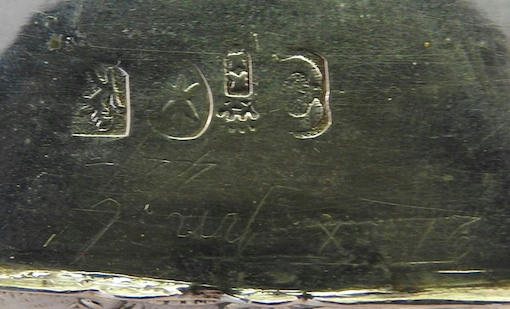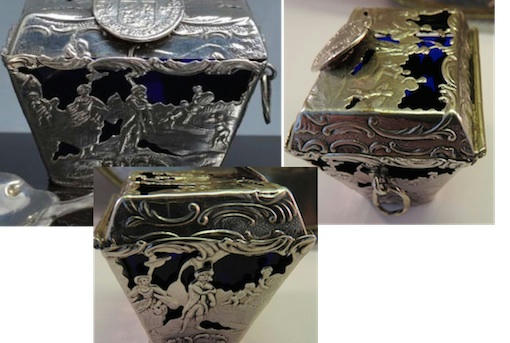

Initially I thought that:
- the lion rampant would indicate the purity grade (it's a bit rubbed, so no '1' can be observed in it),
- the 5-pointed star would refer to Maastricht (as shown here: 925-800 City guild marks as of the middle ages towards 1795 & 1814-2),
- the letter would be for the year (but the closest-looking would have been 1962??)
- and another mysterious mark (the two vertical stars under the crown, 3rd symbol from the left).
Researching further, I came across this post from your forums:
European Silver? in which were shown "a full house of Dutch pseudo/fake marks".
These marks looked very similar to mines..... From that post:
Can you perhaps help to shed some light on my marks?The miniature tea kettle probably has been made around the turn of the 19th century and by a skilled silver smith. The pseudo marks were struck to give the kettle the 'antique look' and perhaps to reduce import duties, antiques are exempt from import duty. Anyway, at the last quarter/end of the 19th century and beginning of the 20th century, there has been a big demand for old continental silver and various silversmiths in the Netherlands started to make ‘antique’ silver items, in combination with legal hallmarks and pseudo marks but also without legal hallmarks and fooled the ignorant beholder/ buyer.
Is my item bearing an example of old pseudo marks?
If not, could you please help identifying the marks?
The salter looks old to me, but not 18C, perhaps a 19th-20th century piece that is made to appear older.
Thanks for your help.

